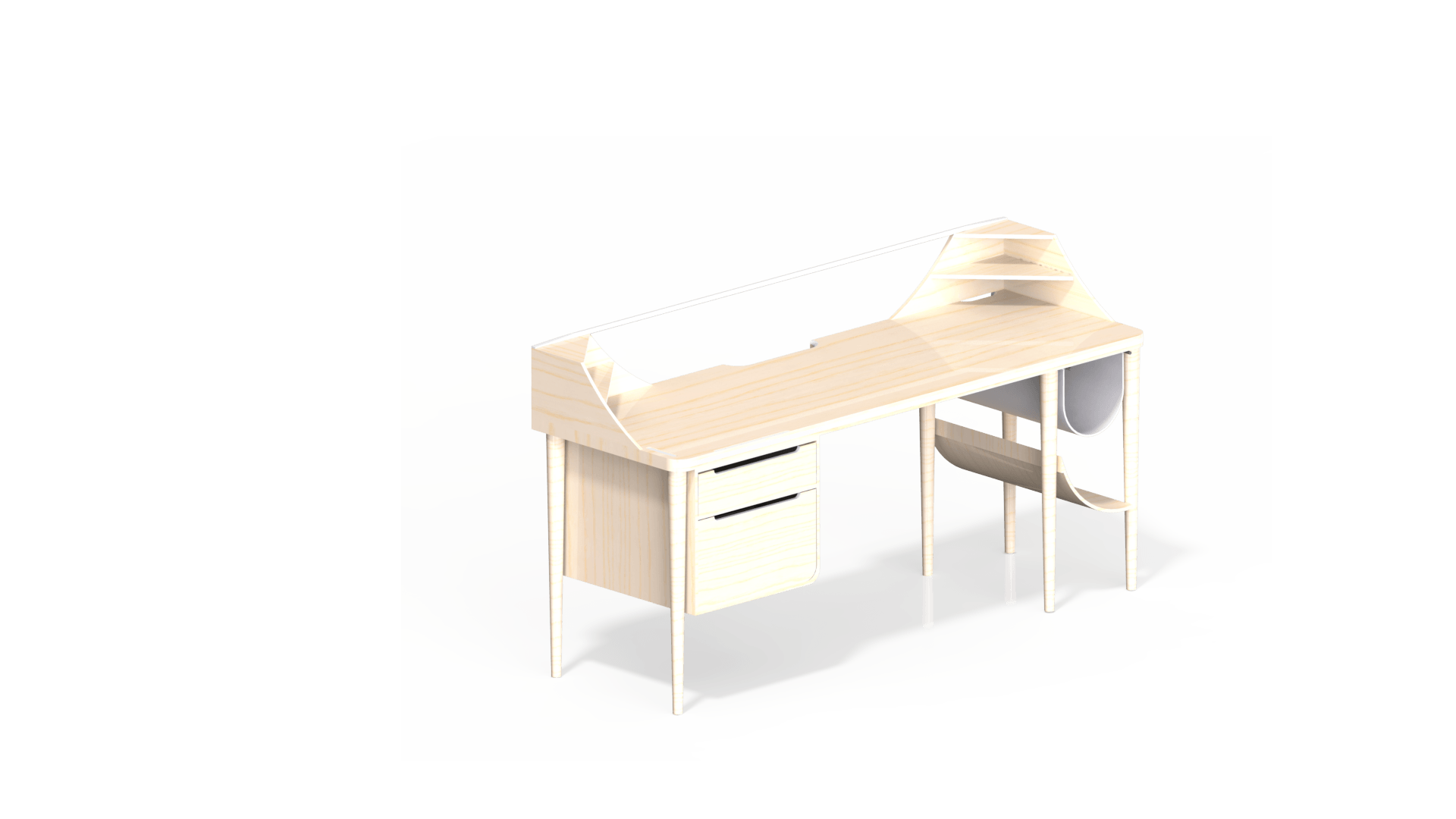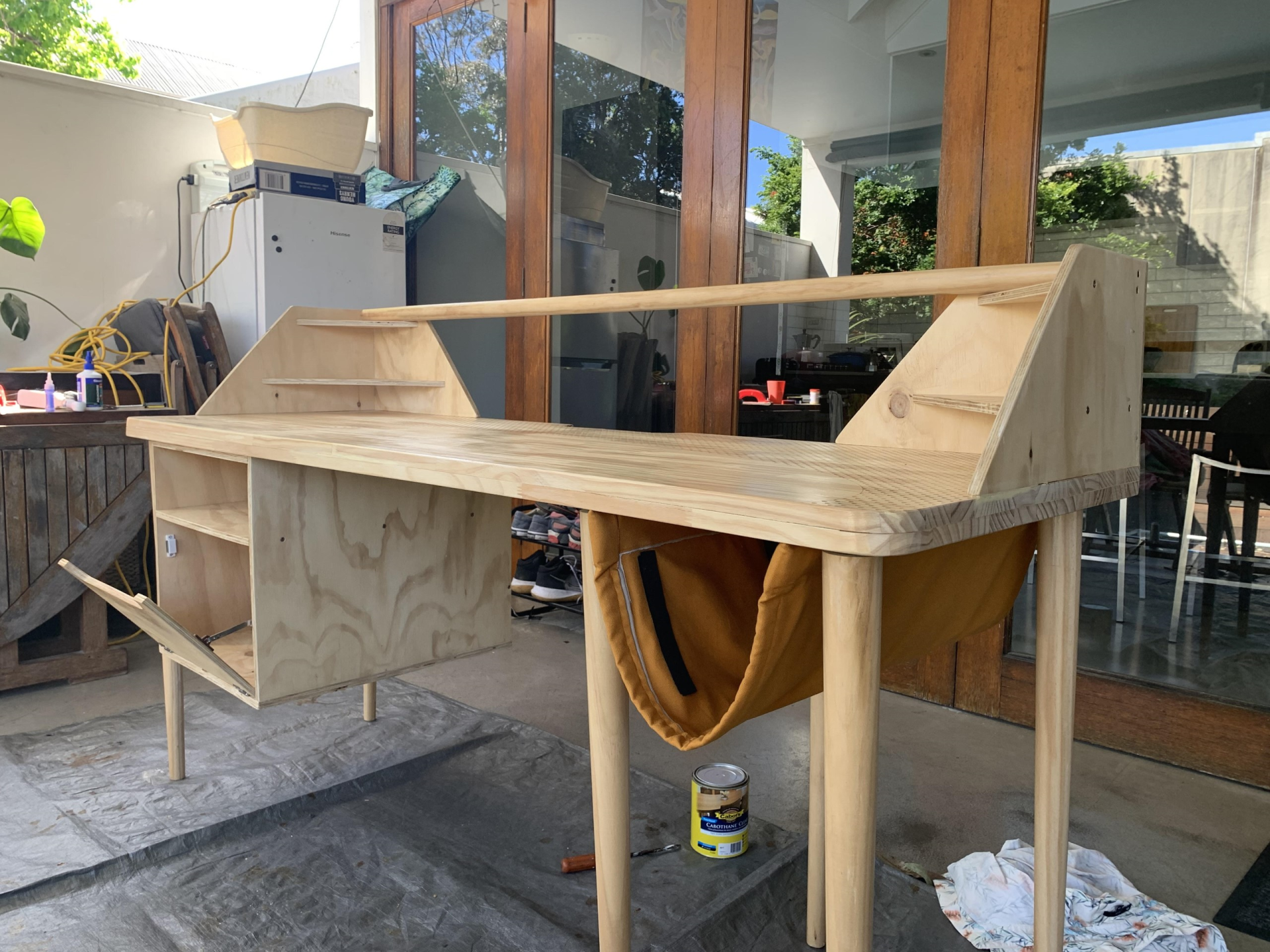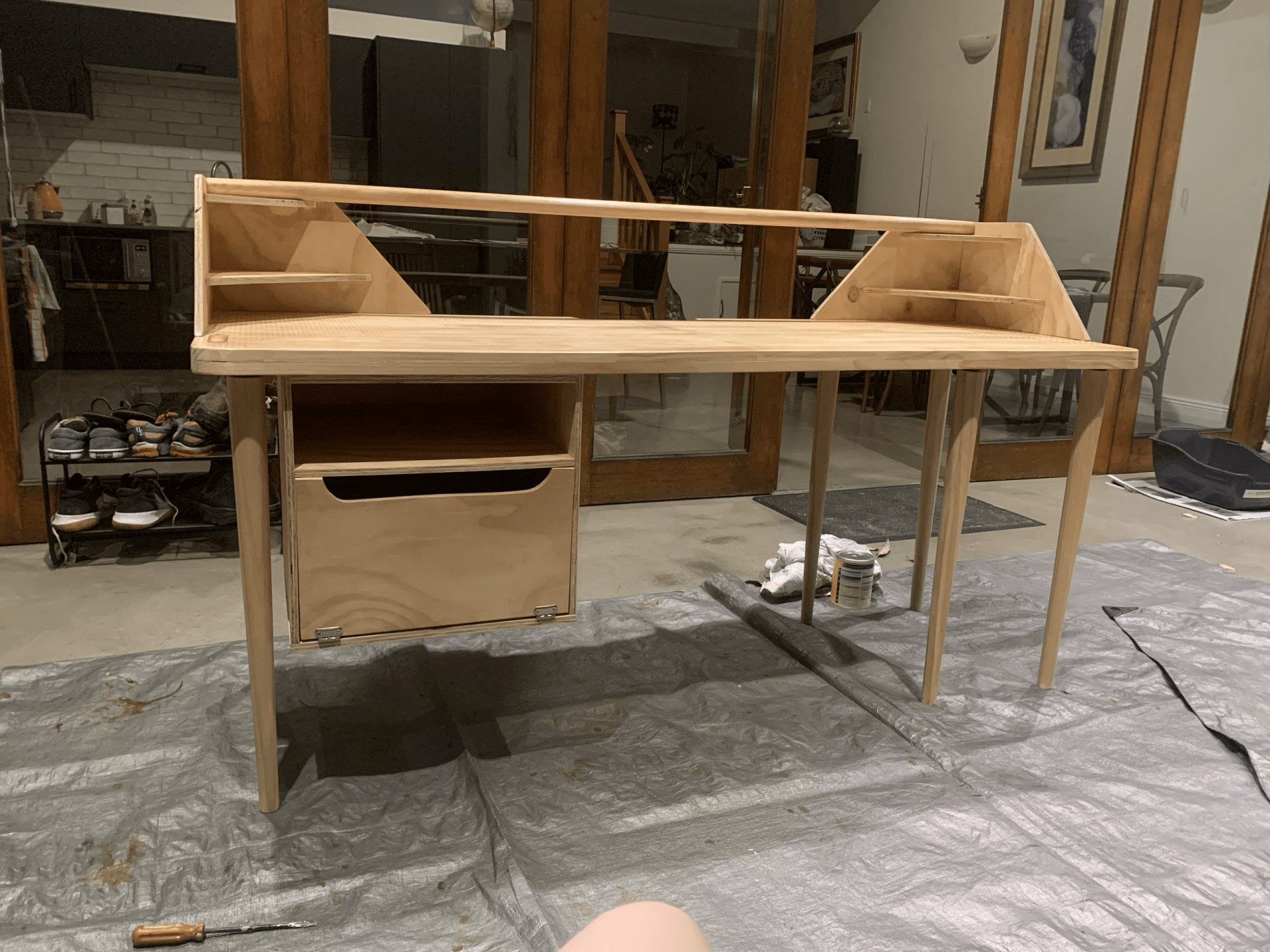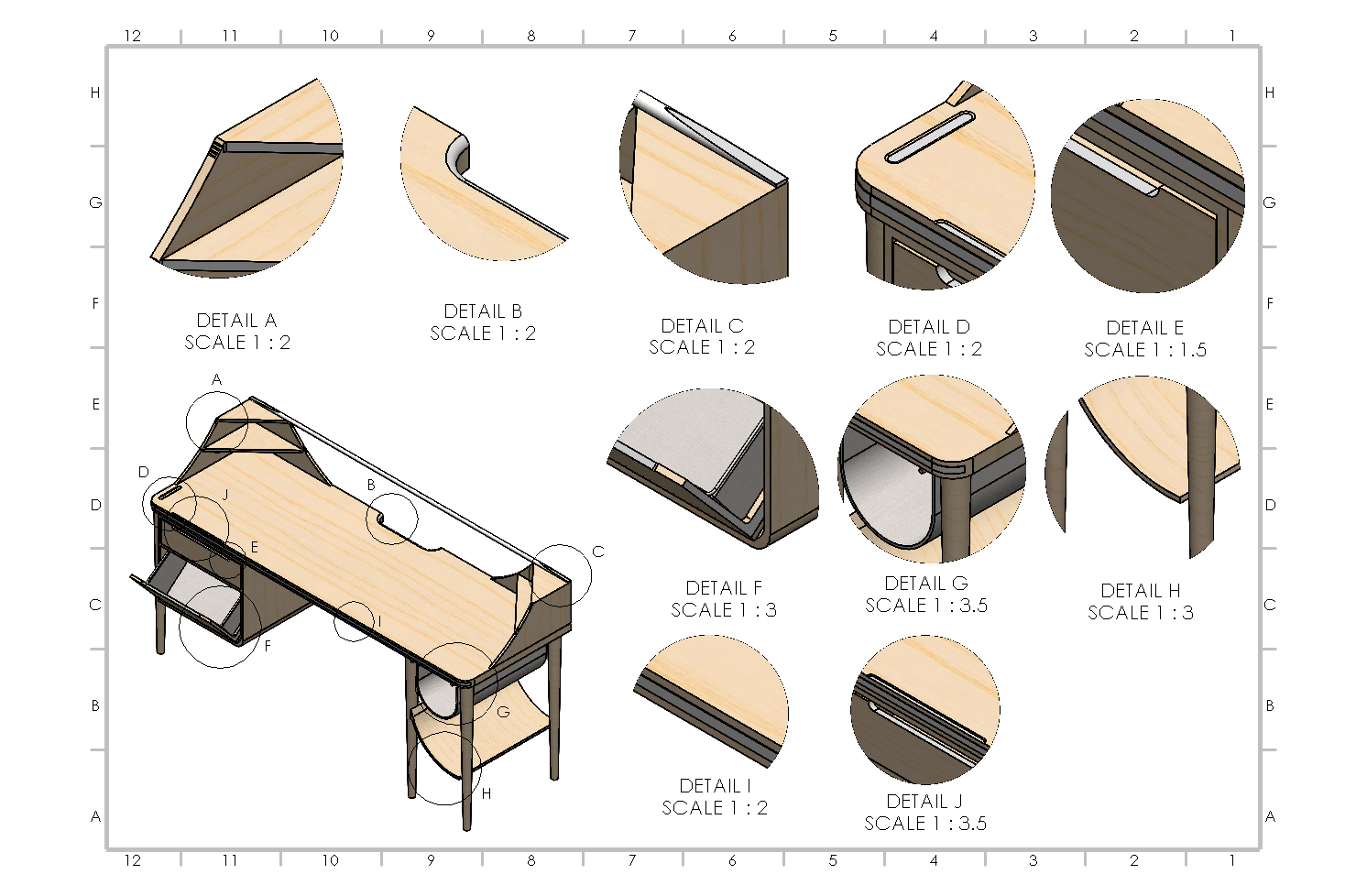
Meg Dortmans
I’m a graduating fourth-year industrial design honours student at Western Sydney University, who is a member of The Academy and The Golden Key International Honors Society. I’m a motivated designer that is eager to further my profession by taking on any experience working with industrial designers in the manufacturing field. I am passionate about inclusive and sustainable design, with a specific interest in furniture design.
The Arlo - Workstation for Those with Low Vision
By 2030, there will be 564,000 more Australians with low vision or blindness, increasing an additional 180,000 from 2016, states "Vision Australia”. This statistic outlines the prevalence of vision disability in our community and how these numbers will continue to increase in the close future. By outlining this reality, the importance of designing for accessibility is showcased as a prevalent need for the disabled community of Australia. Designers in the furniture industry must be held accountable for ensuring Australia’s disabled workforce is equipped with appropriate workstations. Our current social climate, including Covid lockdowns and working from home (WFH) becoming the new standard, has brought this to light. This design research proposal addresses the accessibility and inclusive design gap in the current Australian workstation market and defines a project scope for which designers hope to create a solution for. According to Australia's Institute of Health and Welfare (AIHW), working-age people with disabilities are twice as likely to be unemployed as people without disabilities. To provide the perspective on this statistic, consider 1 in 6 Australians have a disability, making up 4.4 million Australians, half of them unable to participate fully in society. Additionally, those with sight loss are limited to a smaller pool of employment choices as their disability restricts their abilities to perform certain tasks. I witnessed this first-hand during a two-week lockdown at a friend’s house. Both my friend and their roommate have low vision which was evident by the layout and the interactions they had with basic household items. The requirement for physical indicators was one of the most frequently observed patterns. Dishwashers, microwaves, and remote controls all included tactile buttons that clicked or changed height when pressed. Unfortunately, my friend and their roommate had adjusted most of these tools after purchasing them to suit their needs; this was evident when watching how they interacted with their at-home workstations. As a designer and a friend of those with low vision, this both frustrates and inspires the research project, which strives to promote inclusive design in order to make a difference.




